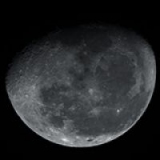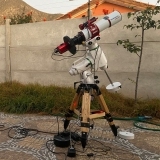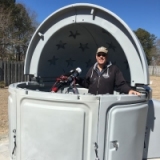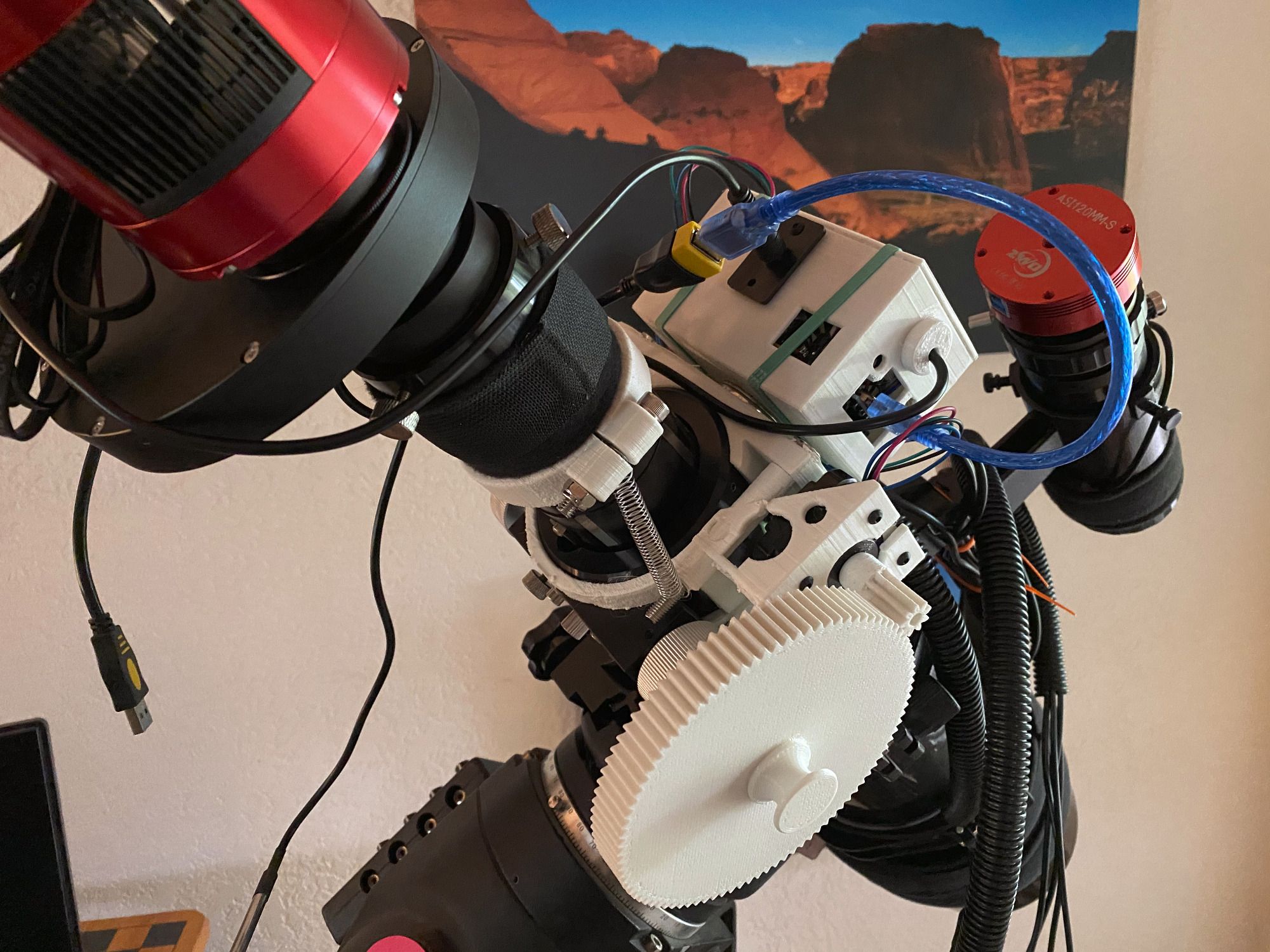INDI Library v2.0.7 is Released (01 Apr 2024)
Bi-monthly release with minor bug fixes and improvements
Request new focuser tools: focuser characterization, focuser backlash, focuser temperature compensation
- Andrew Burwell
-
 Topic Author
Topic Author
- Offline
- Platinum Member
-

- Posts: 527
- Thank you received: 139
Request new focuser tools: focuser characterization, focuser backlash, focuser temperature compensation was created by Andrew Burwell
But looking forward I'd like to put focus on some additional features that would be super beneficial.
First would be a repeatable way to measure focuser backlash. Nina used to do this, but they've taken it out. Now they rely on a focuser run that moves the focuser out of focus in one direction, then slowly moves backwards in small increments taking focus measurements of the FWHM. At the point that the FWHM measurement starts to drop, you take the total steps from the first point to the first drop, and that's your focuser backlash. It seems this type of measurement could be done automatically by the system if implemented.
Second would be focuser characterization. This would be an attempt to measure focus changes from on focus, to out of focus, to determine the best step size increment, max step, etc. Nina also has a manual method to determine this, and it worked quite well for their focus system.
- Example: assuming a starting point of good focus of 4000 steps, we will move the focuser outward by an amount of 10 steps at the time, and take a new exposure at the end of each increment to check the measured HFR. Let's say that after 12 moves (120 focuser steps) no or just a couple of very defocused stars will still be detected by N.I.N.A. The value of 120 steps will therefore represent be the max increment. Scaling it by 80% (roughly 100) and dividing it by the Initial Offset (4) will give us an <em>Auto Focus Step Size</em> of 25.
Third is temperature focus compensation. This is measuring the focus change over time (could be measured with a log noting the temperature and focus change), then deriving the rate of change in steps per degC drop in temperature. This requires the first two focuser tools are implemented. And if this is then implemented, will eliminate multiple additional focus runs throughout a night, giving you more imaging time. Focus will be adjusting in real time along with the drop in temperature as characterized for your system using the noted method. You would want to save the rate of change per telescope/focus system attached so that you could get repeatable results with different imaging rigs. What I regularly experience with the traditional method of focus, is my first frames are very good, then begin to become poor until a new focus routine is invoked by either FWHM change, forced time, filter change, or set temp change. I'd like something that is more consistent throughout the night, and only require a forced focuser run if focus exceeds some predetermined FWHM change.
Thoughts?
Please Log in or Create an account to join the conversation.
- Jasem Mutlaq
-

- Away
- Administrator
-

Replied by Jasem Mutlaq on topic Request new focuser tools: focuser characterization, focuser backlash, focuser temperature compensation
Regarding the 3rd point, I know that Dr. Doug Summers worked on this aspect and got very good results, but it was not yet merged back to KStars. Hopefully we can merge it in the next release cycle.
Please Log in or Create an account to join the conversation.
- Wouter van Reeven
-

- Offline
- Supernova Explorer
-

- Posts: 1957
- Thank you received: 420
Replied by Wouter van Reeven on topic Request new focuser tools: focuser characterization, focuser backlash, focuser temperature compensation
Please Log in or Create an account to join the conversation.
- Andrew Burwell
-
 Topic Author
Topic Author
- Offline
- Platinum Member
-

- Posts: 527
- Thank you received: 139
Replied by Andrew Burwell on topic Request new focuser tools: focuser characterization, focuser backlash, focuser temperature compensation
Please Log in or Create an account to join the conversation.
- Jose Corazon
-

- Offline
- Supernova Explorer
-

- Posts: 1119
- Thank you received: 182
Replied by Jose Corazon on topic Request new focuser tools: focuser characterization, focuser backlash, focuser temperature compensation
All great suggestions, but there is one caveat. The biggest problem I am experiencing, and that none of these changes would fix, is slippage of the telescope tube with my Crayford focuser. And that is dependent greatly upon the angle at which the telescope points up, so that will be changing over the course of the night.
I have tried, with considerable success, to compensate for that with springs and rubber bands that neutralize much of the camera and filter wheel weight, but it remains by far the largest variable in my focusing routine.
I agree that it is far less of a problem when using a helical focuser (like the WO RedCat) of when using a RASA, but for those of us using Crayford focusers, those changes may not make all that much of a difference because their compensatory effects may be occluded by the greater error resulting from slippage and friction. The best way I have found to maintain near perfect focus is to refocus whenever the temperature differential exceeds 1.5 C and then using the linear focuser. That takes only 3 min and then I am set for usually another hour at least of uninterrupted imaging.
Looking forward to reading other takes on this.
Jo
Please Log in or Create an account to join the conversation.
- Andrew Burwell
-
 Topic Author
Topic Author
- Offline
- Platinum Member
-

- Posts: 527
- Thank you received: 139
Replied by Andrew Burwell on topic Request new focuser tools: focuser characterization, focuser backlash, focuser temperature compensation
It might be worth considering a new focuser, unless you can live with the issue it presents. I would assume, all the existing methods of focus will stay with the system, and you could continue to use those as you have.
Please Log in or Create an account to join the conversation.
Replied by Alfred on topic Request new focuser tools: focuser characterization, focuser backlash, focuser temperature compensation
Please Log in or Create an account to join the conversation.
- Ron Clanton
-

- Offline
- Elite Member
-

- Posts: 225
- Thank you received: 16
Replied by Ron Clanton on topic Request new focuser tools: focuser characterization, focuser backlash, focuser temperature compensation
On item #3, I sometimes experience the same issue... but in the "capture" tab, I have been instructing the sequence to refocus every hour. It works pretty well (as long as auto focus doesn't lock up).
Have you tried that?
Ron
Please Log in or Create an account to join the conversation.
- Andrew Burwell
-
 Topic Author
Topic Author
- Offline
- Platinum Member
-

- Posts: 527
- Thank you received: 139
Replied by Andrew Burwell on topic Request new focuser tools: focuser characterization, focuser backlash, focuser temperature compensation
The point though is to keep autofocus runs to a minimum. I probably lose an hour total a night due to autofocus runs. I do three measurements per position set to average the frame. I do full frame images and get the measurement. A run takes about 10 minutes, and I'll often see between 6-10 runs a night. I can obviously speed this up if I do subframe, and less images per position; at the expense of less accuracy. And because I don't want them running more often than 45 minutes to an hour, I always see a gradual decline even within that hour of my frame quality. I graph this in APP when processing my frames. Living in the south, especially this time of year, the temperature drops rapidly every night causing big fast changes in FWHM, especially on my larger scope (Edge 11).
Anyhow, this thread isn't really about solving my specific issues, but how to make things better for everyone. Comments or suggestions on best implementation for any suggested idea is welcome.
Please Log in or Create an account to join the conversation.
- Jose Corazon
-

- Offline
- Supernova Explorer
-

- Posts: 1119
- Thank you received: 182
Replied by Jose Corazon on topic Request new focuser tools: focuser characterization, focuser backlash, focuser temperature compensation
No question, Andrew, for those of us who have access to devices like the Moonlite Nightcrawler, which costs upwards of $2500, this would be no issue and actually a great solution.
I am more thinking of the amateurs on a budget here, who run their rigs with a screw driver and a roll of duct tape. We have to make sure that ever more sophisticated system requirements are not leaving us in the dust.
I have been helping a few people setting up their rigs on a low budget and getting decent results. I know that the majority of them would not have taken up astrophotography if the financial investment had been even a smidgen higher.
Here a picture of my ES102ED with a 3D-printed autofocuser operating the stock Crayford focuser that came with the ES102. Total component cost ~$40, using the MoonLite protocol on MyFocuserPro. That is a much smaller hurdle than having to shell out 3 months of Social Security for a Night Crawler. And it only takes a couple of people in a club who have a $200 3D-printer at home to equip every other member in the club with the components for such a device.
As I wrote, the stock Crayford works just fine, once I had figured out how far I could tighten the focuser screw so that it would not slip when vertical and still allow the focuser to move the drawtube without stalling the stepper motor or the tube itself seizing up. But I doubt it would be good enough to ensure accurate focus by temperature shift prediction alone.
Just pointing out real world limitations here.
Jo
Attachments:
Please Log in or Create an account to join the conversation.
- Andrew Burwell
-
 Topic Author
Topic Author
- Offline
- Platinum Member
-

- Posts: 527
- Thank you received: 139
Replied by Andrew Burwell on topic Request new focuser tools: focuser characterization, focuser backlash, focuser temperature compensation
Attachments:
Please Log in or Create an account to join the conversation.
- Ludovic Pollet
-

- Offline
- Junior Member
-

- Posts: 38
- Thank you received: 30
Replied by Ludovic Pollet on topic Request new focuser tools: focuser characterization, focuser backlash, focuser temperature compensation
I would bet your setup already includes a raspberry pi to automate that
Please Log in or Create an account to join the conversation.


